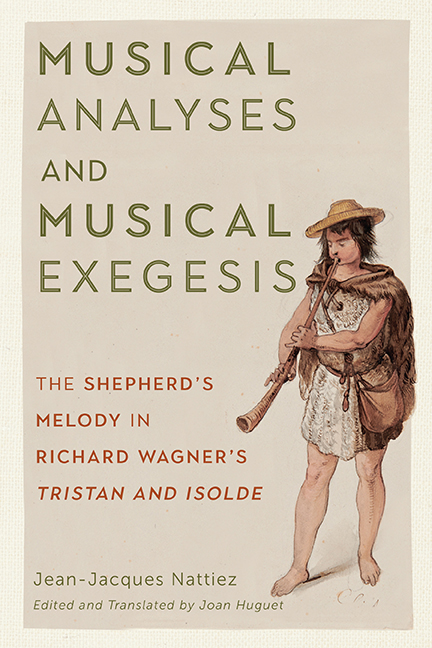 Musical Analyses and Musical Exegesis
Musical Analyses and Musical Exegesis Book contents
- Frontmatter
- Dedication
- Contents
- Foreword to the French Edition
- Preface
- Introduction: The English-Horn Solo, My Approach, and Models of Analysis and Musical Meaning
- Part I Immanent Analysis of the English-Horn Solo’s Musical Structures
- Part II Esthesic Analysis
- Part III Poietic Analysis
- Part IV Hermeneutics
- Conclusion: The Validity of Structural Analyses and Interpretations
- Bibliography
- Index
1 - Linear Analyses
Published online by Cambridge University Press: 02 June 2021
- Frontmatter
- Dedication
- Contents
- Foreword to the French Edition
- Preface
- Introduction: The English-Horn Solo, My Approach, and Models of Analysis and Musical Meaning
- Part I Immanent Analysis of the English-Horn Solo’s Musical Structures
- Part II Esthesic Analysis
- Part III Poietic Analysis
- Part IV Hermeneutics
- Conclusion: The Validity of Structural Analyses and Interpretations
- Bibliography
- Index
Summary
Models of Immanent Analysis
The first part of this study will consider the immanent or structural models of analysis, those which Molino referred to as neutral-level analyses; that is to say, those models that do not attribute a priori pertinence to a work's poietic or esthesic content.
As I discussed in the introduction, there are two large categories of models for neutral-level analysis: segmentational analysis (we will discuss both formal and paradigmatic models) and linear analysis. The objective of the former group is twofold. First, these models reveal the ways in which the musical surface can be divided into discrete units, segments, or objects, such as intervals, motives, sequences, phrases, chords, harmonic progressions, and so forth. Additionally, the segmentational models establish the relationships that paradigmatic analysis can then identify and define with a high degree of precision. The objective of linear models of analysis is not to segment the musical surface, but to reveal syntagmatic prolongational and implicative relationships between the individual pitches in a piece of music. This does not mean that linear analyses cannot reveal units with clear beginning and ending points at different structural levels. On the contrary, linear analysis maintains strong links to Formenlehre analysis. Indeed, in many cases, the determination of a piece's form is the result of linear analysis.
This is one reason that we will begin our study of immanent structures with linear analysis. Even though many authors take Formenlehre analysis as their starting point, we must remember that analytical methodologies never exist in their purest form in practice, as I discussed in the introduction. Every analysis is a combination of methodologies, even if one predominates in relation to the others, as we will see in the diverse approaches to the solo. Fred Lerdahl and Ray Jackendoff perhaps provide the best justification for beginning with linear analysis, even though they begin their own work with segmentational units. They write, “in the grouping, metrical, and time-span components, there is nothing that expresses the sense of tension and relaxation involved in the ongoing process of music.” Because music is fundamentally a temporal art, we will begin our study of the solo's immanent structures with its linear organization, as close as possible to the immediate and continuing experience of its listeners.
- Type
- Chapter
- Information
- Musical Analyses and Musical ExegesisThe Shepherd's Melody in Richard Wagner's <I>Tristan and Isolde</I>, pp. 31 - 84Publisher: Boydell & BrewerPrint publication year: 2021
